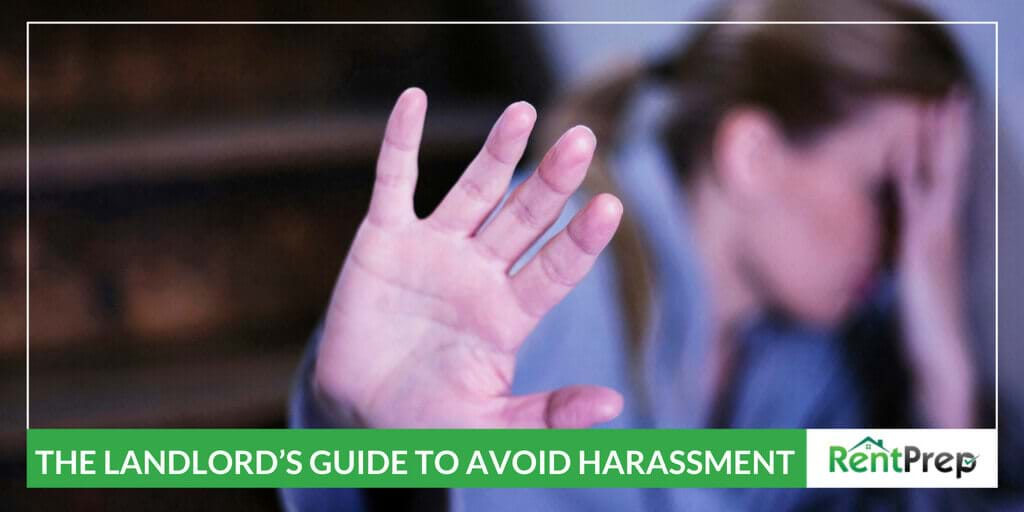When money, investments, and habitat are mixed it can create a powder keg for some landlord-tenant relationships.
It can be easy to cast stones depending on what side you stand…
… however, like most things in life, there are two sides to the coin.

We’re going to break down 10 examples of landlord harassment and 10 examples of tenant harassment. Most importantly we will discuss how to remedy the situation.
Most landlords probably do not intend to harass their tenants, but understanding what it means and identifying situations that may be considered harassment will go a long way in educating landlords on what not to do, especially when tensions run high and they are frustrated.
What is Landlord Harassment?
Landlord harassment is when the landlord creates conditions that are designed to encourage the tenant to break the lease agreement or otherwise abandon the rental property that he or she is currently occupying. Landlord harassment is a specific set of behaviors that the law recognizes and landlords can be punished for this kind of activity.
While sometimes it is hard to prove landlord harassment, more and more courts are recognizing this kind of behavior and imposing the appropriate legal penalties when the issues are brought to court.
10 Examples of Landlord Harassment
- Failing to perform maintenance tasks in a timely and responsible manner
- Withholding amenities that were previously allowed, such as pool privileges or landscaping services
- Notices of improper conduct that are made up or exaggerated
- Notices of improper conduct that single out the tenant while violations from other tenants are ignored
- Refusing to accept or otherwise acknowledge proper payment of rent
- Entering the property without just cause or proper notice, often repeatedly
- Creating a nuisance (like loud noise or throwing trash) that disrupts the tenant’s ability to quietly enjoy the rental unit
- Deliberate destruction of tenant’s property
- Threats of financial injury, such as reporting to a credit bureau or refusing to provide positive references to future landlords
- Physical intimidation and threats of physical violence
Landlord harassment often happens when landlords feel like they cannot wait for proper methods to raise the rent or not renew lease agreements. Many cases happen in strict rent-controlled areas where landlords want to get rid of current, lower rent tenants in favor of higher paying newer tenants.
Landlords who resort to these actions are often trying to avoid the expense of eviction and the hassle of removing a tenant in the proper, legal way.
Even if the tenant is violating the lease agreement or the landlord has decided not to renew the lease agreement when it expires, there is no excuse and no valid reason for landlords to harass tenants.
In NYC a landlord can even be fined somewhere between $1,000 – $10,000 for harassment.
10 Examples of Tenant Harassing Landlord:
- Tenant refuses to pay rent citing repair issues
- The landlord constantly receives noise complaints about the tenant
- The tenant sends threatening emails or texts to the landlord
- The tenant pays rent in large amounts of change
- The landlord goes through the proper procedures to raise rent and the tenant refuses to pay or leave the rental
- The tenant violates the warranty of habitability of other tenants
- The tenant shows up at the landlords home
- A tenant assaults the landlord
- The tenant refuses to follow parking guidelines
- The tenant claims to have sent cash by mail for the rent and refuses to pay rent now
Landlord Retaliation
Another aspect of landlord harassment happens when the tenant has complained about the landlord to the building owner, an apartment association or government agency.
It’s called landlord retaliation and is recognized by the law as behavior designed to punish a tenant for properly filing a valid complaint or organizing or joining a tenant union or similar group. Tenants can also be protected from vengeful landlords if they properly withhold money from rent for repairs based on their state’s laws.
If the tenant has issued a complaint about something a landlord has done or has not done, some landlords may feel offended or angry and set out to punish the tenant. In addition to the behaviors described previously, landlords often retaliate by starting the eviction process, raising the rent or changing something about the terms of tenancy.
Other retaliatory acts might include restricting or decreasing services. Although these things are perfectly acceptable for landlords to do when there are no issues between them and the tenant, they can be seen as an act of retaliation when performed soon after a tenant complaint.
The courts automatically recognize such action taken by a landlord (typically within six months) after tenant action as retaliation. Therefore, if the tenant complains, the burden of proof is up to the landlord to show that their actions are not in retaliation for what the tenant has done.
The landlord would need to convince the court that they would have taken that action (raise the rent, not renewed the lease agreement, etc.) regardless of what the tenant’s actions were. If the action takes place some time and distance away from the tenant’s protected action, it can still be proved to be retaliation but the burden of proof shifts to the tenant.
What to do if landlord is harassing tenant?
In most cities there is usually an organization that repesents tenants and their rights. A quick local Google search should reveal if this is the case in your area. For example, here in Buffalo, NY we have HOME (Housing Opportunities Made Equal) which any landlord or tenant can call to discuss issues or questions they have.
Services like these are a good step if normal remediation techniques are not working or the tenant or landlord is being abusive.
The Bottom Line
It’s against the law to use intimidation, coercion or harassment to attempt to get a tenant to vacate a rental property. It’s also against the law to punish a tenant for a protected action.
To protect themselves from accusations, it’s important for landlords to keep copies of all notices, letters, rental agreements, and more. It’s also a good idea to write down summaries of phone conversations, note witnesses to conversations and otherwise document questionable actions.
For example, if a tenant makes a complaint to a government agency and the landlord was planning on raising everyone’s rent a few months later, he or she should document that all rents were raised, not just the particular tenant’s rent.
Recognizing what kind of actions and behavior could constitute harassment is a critical component for landlords to understand in successfully managing a rental property. Avoiding harassment, even if unintentional, is the best way to deal with tenants and landlords should instead choose the proper, legal methods to manage their rentals.
Do you have any suggestions on how landlords can better handle harassment accusations from tenants? Please share this article and let us know in the comments section below.
Source: Rentprep





